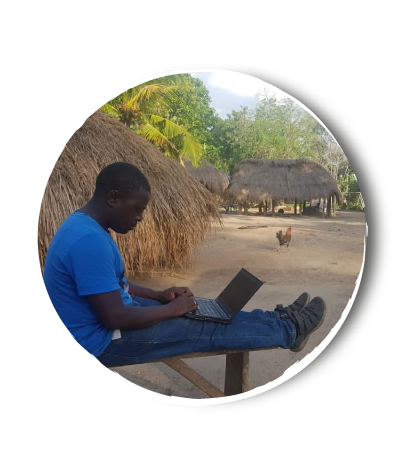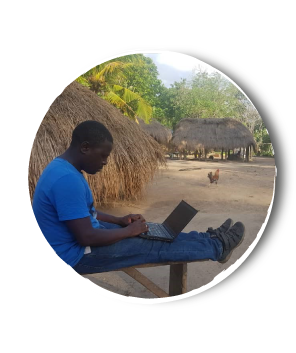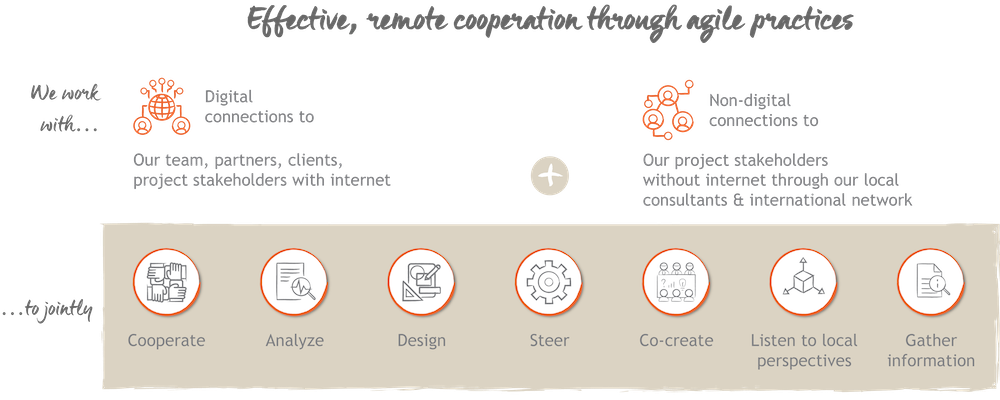

Ten years ago, we first started carrying out remote projects, such as feasibility studies and evaluations in countries with very high security risk or active warfare. A combination of virtual tools linking us to stakeholders with internet connection, the valuable work of our local consultants, and technology such as GPS-tracked photos and satellite images proved to be essential for successfully completing these assignments. We thus quickly adapted to this new mode of remote engagement as a matter of necessity.
Then we discovered the benefits: We were able to connect to people around the globe if travel was not feasible. Experimenting with human-centered methods, we found to our surprise, that at times we were able to maintain an even closer relationship with relevant stakeholders than was usually possible in hectic meetings. Furthermore, we realised that team members need not necessarily be in the same location to cooperate effectively.

Today, we are grateful to be digitally connected to many places in the world. Over the past few years, we have conducted several virtual missions in locations with stable internet connection. We also collaborate with local consultants to set up interviews, gather data, and support our analyses, allowing us to operate even in remote areas and engage directly with local populations which lack digital access. We usually maintain close communication with our local consultants in order to ensure optimal outcomes of remote missions.
Agile methods enable our remote work. Human connection and meaningful interaction are important building blocks of our work. We have experienced that methods drawn from the “Theory U” framework, such as Social Presencing, Theatre, or Journaling can greatly facilitate virtual exchange. We have also experimented successfully with innovative remote feedback approaches as well as digital creativity techniques, for instance by using virtual wallpaper. To foster team collaboration on “remote projects”, we have found Scrum to be an especially useful tool. Overall, our openness to innovative approaches and technological solutions allows us to deliver optimal, state-of-the art solutions to the challenges commonly encountered in remote projects.
